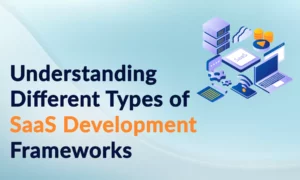In the rapidly evolving digital ecosystem, the significance of robust API security mechanisms cannot be overstated. Muthukrishnan Manoharan, a seasoned Engineer with extensive expertise in Cloud Security, SaaS, and secure network management, shares innovative approaches to mitigating the rising threats of Distributed Denial-of-Service (DDoS) attacks.. In this article, we delve into the latest advancements in API rate-limiting techniques and their transformative impact on modern software systems.
The Backbone of API Security
API rate limiting is the cornerstone of SaaS application security, ensuring that system resources remain accessible even under heavy traffic. As APIs become the lifeline of digital infrastructure, safeguarding them from malicious activity is paramount. Traditional approaches relied heavily on IP-based rate limiting, but these methods often failed to adapt to sophisticated attack patterns. Modern strategies, such as context-aware rate limiting, have emerged as game-changers, analyzing user behavior and historical data to dynamically adjust thresholds.
Advanced Rate Limiting Algorithms
The evolution of rate limiting is marked by the development of innovative algorithms tailored to diverse application requirements. Three prominent algorithms stand out:
- Token Bucket Algorithm: Known for its burst tolerance, this method ensures smooth traffic flow by refilling tokens at a consistent rate, allowing temporary traffic spikes without compromising long-term stability.
- Leaky Bucket Algorithm: Ideal for scenarios demanding strict rate enforcement, this algorithm offers a constant outflow rate, smoothing traffic surges but potentially introducing latency.
- Sliding Window Algorithm: With its ability to monitor traffic patterns over rolling timeframes, this approach eliminates boundary issues seen in fixed-window methods, ensuring precise rate enforcement.
These algorithms empower systems to balance security and performance, tailoring responses to specific use cases.
Adaptive Rate Limiting: The Next Frontier
Static rate limits often fall short in addressing the dynamic nature of modern APIs. Adaptive rate limiting, powered by real-time analytics and machine learning, adjusts thresholds based on current traffic patterns and resource usage. This approach not only enhances resilience against DDoS attacks but also optimized resource allocation, ensuring that legitimate users experience minimal disruption.
Advanced Approaches: Resource and Tier-Based Limiting
Recognizing the varying computational demands of different API endpoints, resource-based rate limiting assigns weights based on endpoint complexity. For instance, data retrieval requests may have lighter weights compared to resource-intensive operations like video processing. Additionally, tier-based rate limiting aligns access levels with customer plans, balancing fairness and system stability. Enterprise users benefit from higher limits, while free-tier users operate under stricter constraints, protecting system integrity.
Combating DDoS with Intelligence
Modern DDoS attacks leverage sophisticated tactics, such as leveraging IoT devices to generate legitimate-looking traffic at scale. Rate limiting plays a pivotal role in mitigating these threats. By profiling traffic and employing behavioral analysis, systems can distinguish between genuine users and malicious actors. Multi-layered defenses, integrating static thresholds with adaptive adjustments, offer robust protection.
Best Practices for Implementation
Effective rate-limiting systems prioritize transparency and user communication. Informative HTTP response headers, such as X-RateLimit-Limit and Retry-After, help users manage their quota effectively. Moreover, implementing intelligent retry strategies, such as exponential backoff with randomized jitter, minimizes the risk of synchronized retries overwhelming the system. Regular updates to rate-limiting policies and machine learning models ensure continued effectiveness against evolving threats.
Emerging Trends in Rate Limiting
The integration of machine learning has redefined rate-limiting capabilities, enabling real-time anomaly detection and predictive adjustments. Ensemble learning, which combines predictions from multiple models, enhances anomaly detection in complex traffic scenarios. Edge-based rate limiting, implemented through content delivery networks, has revolutionized traffic management, offering regionalized controls and reducing latency by up to 60%.
The Path Forward
As APIs continue to dominate the technological landscape, the need for advanced rate-limiting mechanisms will grow. Emerging technologies, such as OpenTelemetry, promise enhanced observability, enabling predictive adjustments based on historical data. Reinforcement learning-based systems, capable of self-optimizing in real time, represent the future of API security.
These advancements, as highlighted by Muthukrishnan Manoharan, emphasize the transformative potential of robust API rate-limiting strategies. To stay ahead of evolving security threats, it’s crucial to explore advanced rate-limiting techniques and adaptive strategies. Consider evaluating your own API security mechanisms to ensure they can withstand the challenges of tomorrow’s digital ecosystem.































